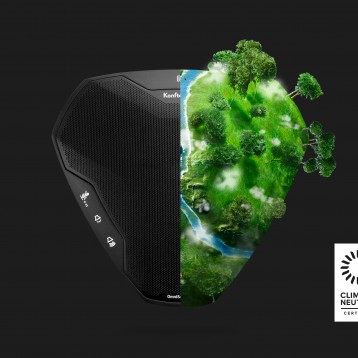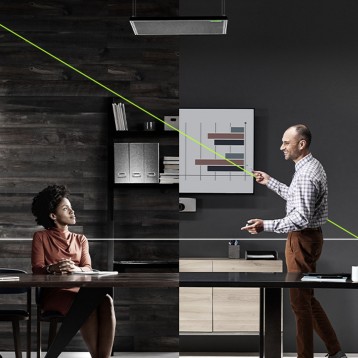The concept of all distance communication is to help us provide messages quickly to locations too far away to hear raised voices or to reach in a reasonable time. Smoke signals are one of the earliest forms and are traditionally associated with Native Americans.
In fact, they were used as far back as Ancient China (around the 8th Century BCE). More advanced signals using torches were developed to deliver more complex messages. Eventually, telegrams were delivered using Morse code. The modern forms of communications in business deliver voice through telephony and the written word in the form of email or instant messaging. Now, we’re asking ourselves if voice and written word is enough; perhaps we need face-to-face communications using video technology.
Rich media
As we deliver improved forms of communication to our colleagues and team-members, we need to ask ourselves how well is this working? We all know that millennials are streaming into the business world and they need multiple forms of communication to do their jobs, don’t they? Us old(er) folks don’t understand, as we’re used to writing letters. The modern business person needs instant communication via video and high-quality audio so she can get the job done.
I’m not so sure about this. I have worked with lots of people of different ages over the years and although younger generations (like many of us) appear to enjoy receiving their news content in video form, as opposed to the written form. These same people are no-more inclined to pick-up the phone or book a video meeting to deal with business matters, preferring instead to send an email, IM or Tweet. Is it youthful bashfulness or a change in our behaviour? Is written communication so immediate now, thanks to Smart phones and tablets, that I’m a bit old-fashioned to think a quick conversation is a more effective way to get things agreed?
What works?
Whatever is causing it, I’m not sure there is enough good-quality independent research out there to tell us what works most effectively when it comes to communication in business. Instead we just tend to stick technology into our businesses, perhaps depending on what we hear in publications such as this one and then hope we did the right thing (sometimes we shout at people for not using the stuff we put in).
This is ironic given that we are living in an age of instant feedback. Many people take a run or a bike ride knowing exactly how far they have gone, how fast they did are going and what their heart rate is. This happens on a much broader scale as well. Companies such as Netflix will study exactly what people prefer to watch down to very fine detail, understanding what about certain programs makes people tune in or turn off. This is then fed-back to program-makers to better serve the preferences of viewers.
Bearing this in mind is it not sensible to get this kind of feedback on the communications technologies we put into our businesses?
Feedback at hand
Help is at hand! For the last few years, video-conferencing vendors have been able provide users with detailed data regarding use of equipment. If you want to know how many calls have been hosted, how many endpoints were connected and how long the call lasted – this is usually information your provider can give you. Judging by the some of the technologies on show at InfoComm, this is about to go a stage further. Using artificial intelligence such as neural pathways powered by machine learning, it’s possible to establish how many people were actually sitting in front of the video conferencing device as it was used.
The practical applications of this are that you can establish how often your video conferencing equipment is being used, how well populated the room is (do you regularly have 2 people in a video-room that can host 20, whilst 15 people cram into a 5-seat meeting room elsewhere on site). Are the Marketing Department actually doing their weekly team meeting or is their booking stopping their colleagues from using an empty room?
Anecdotal evidence?
It seems sensible to require this type of information back from the technology you deploy, otherwise, you are reliant on anecdotal evidence. You could easily be fooled into thinking nobody is using your newly deployed technology and then removing it when it was just starting to gain momentum.
This is a new development and is yet to be widely used. However, if it works as it should there are other applications besides use in video conferencing rooms that this could be handy for. If you can detect that there are people in a room, you can detect other things, such as devices that somebody may have left behind, perhaps fire or smoke or if somebody is lying prone on the floor as opposed to standing.
To me, it seems that this type of information is exactly the kind of feedback a business could benefit from.
This type of data is not only available for video conferencing solutions. You can also pick up usage statistics for hardware or software into your business. If you have deployed Skype for Business and you want to know how well used it is, asset mapping and management companies can provide you with these statistics. This is not necessarily cheap but because this can help with future buying decisions, it is usually possible to see how you can save a lot of money in the long term.
So next time you’re pondering a purchase of technology for your business, ask yourself how you can track usage to determine your return of investment… or perhaps how you can offer the technology in such a way that suits how your team wants to use it.








